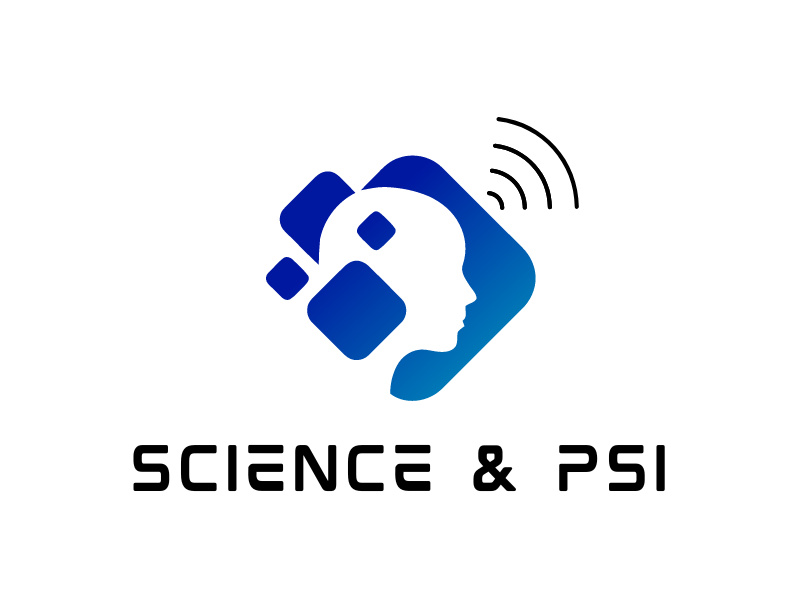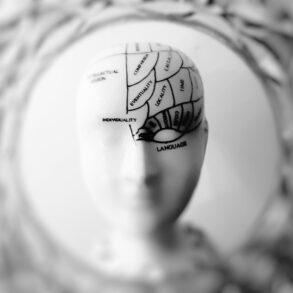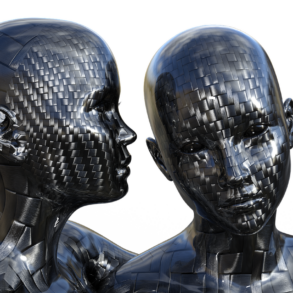Parapsychology, often perceived as a mysterious and unconventional scientific discipline, delves into the enigmatic realm of human consciousness and its extraordinary capabilities. In this exploration, we unravel the intricate tapestry of parapsychology as a legitimate scientific field, delving into its rich history, its distinguished contributors, and the ongoing challenges and future possibilities it faces.
Parapsychology, marked by its commitment to the scientific method and a disciplined approach, seeks to demystify the unexplained aspects of human experience. In a world where the line between genuine scientific inquiry and pseudoscience can blur, this article endeavors to shed light on why parapsychology stands as a beacon of scientific exploration and how it distinguishes itself from pseudoscientific claims.
Join us on a journey through the annals of parapsychology as we navigate its historical foundations, the evolution of its research methodologies, and the formidable challenges it continues to surmount. In doing so, we will gain a deeper understanding of the field’s quest to uncover the extraordinary within the ordinary and the remarkable potential it holds for the future of scientific inquiry.
II. What Pseudoscience Really Means and Its Implications
The demarcation problem, or the challenge of differentiating science from non-science, has been a longstanding concern in the realm of philosophy of science. This distinction is not merely an academic exercise; it holds profound implications for our society, influencing our public and private decisions. Among the many demarcations, the one between science and pseudoscience is arguably the most consequential due to pseudoscience’s persistent attempts to masquerade as genuine science.
A. The Falsifiability Criterion
One of the best-known solutions to the demarcation problem comes from the philosopher Karl Popper, who introduced the concept of falsifiability. Popper contended that scientific statements or systems of statements must be capable of conflicting with possible or conceivable observations. In simpler terms, a statement is scientific if it can, at least in principle, be proven false by empirical data.
Popper’s falsifiability criterion is familiar to many scientists and non-scientists alike. However, it is essential to note that this view is not universally accepted among philosophers of science, and discussions regarding alternative criteria are far from settled. Nevertheless, the falsifiability criterion remains an influential perspective that serves as a robust tool for distinguishing science from pseudoscience.
B. Pseudoscience in the Light of Falsifiability
Pseudoscience, as defined, encompasses a wide array of statements, beliefs, or practices that claim to be both scientific and factual but are incompatible with the scientific method. The critical issue with pseudoscience is that it often lacks the fundamental attribute of falsifiability. In contrast to genuine science, where hypotheses can be tested and, if necessary, rejected, pseudoscientific claims often resist falsification.
While Karl Popper emphasized that we should not dismiss pseudoscience as entirely useless, uninteresting, or false, he firmly maintained that it does not qualify as science. Pseudoscience might offer an appealing or comforting view of the world, but this view is often constructed in a way that makes it resistant to disproof. In the scientific realm, the absence of falsifiability signifies a substantial difference between genuine scientific theories and pseudoscientific claims.
C. Implications of the Difference
The distinction between science and pseudoscience is not rooted in the guarantee of scientific theories always being true and pseudoscientific theories always being false. Instead, the essential difference lies in the level of logical justification for knowledge claims.
1. Scientific Rigor: In the scientific method, theories are subjected to rigorous testing. If a scientific theory turns out to be incorrect, the scientific community, with its emphasis on empirical evidence and skepticism, is well-equipped to recognize and rectify the error. This self-correcting mechanism allows science to progress continuously, adapting its understanding of the world to match the available evidence.
2. Pseudoscientific Illusion: In contrast, pseudoscientific theories may provide a sense of understanding, but they tend to lack the same commitment to empirical testing and validation. Pseudoscientific claims, often based on anecdotal evidence or vague, untestable assertions, are more prone to stagnation. The absence of rigorous testing means that adherents of pseudoscience may hold onto their beliefs despite the lack of empirical support.
Examples of Pseudoscientific Fields
To shed further light on what pseudoscience encompasses, here are some examples of fields often considered pseudoscientific:
– Astrology
– Feng shui
– Phrenology
– Conversion therapy
– Ghost hunting
– Cryptozoology
– Pseudoarchaeology
– Ancient astronauts
– Creation science
– Cattle mutilation
– Magnet therapy
– Quantum Healing
– Crystal Healing
D. Contemporary Parapsychology and Falsifiability
Parapsychology, despite the historical associations with pseudoscientific phenomena like apparitional experiences, hauntings, alien abductions, levitation of objects, and the bending of metal, has evolved into a contemporary scientific discipline with a commitment to falsifiability.
Contemporary parapsychological studies, focus on neuro-exceptional phenomena such as extrasensory perception, telepathy, precognition, clairvoyance, psychokinesis, and psychometry, and assiduously adheres the scientific method. Parapsychologists conduct experiments with defined hypotheses, rigorous methodologies, and statistical analyses. The results of these studies are published in reputable scientific journals and subject to peer review, showcasing the field’s commitment to empirical evidence and falsifiability.
In the following sections, we will delve into the role of pseudo-skeptics, the depth of discipline and accountability in parapsychological study, and what sets parapsychology apart from other fields of study.
III. Pseudoskeptics and Their Contribution
In the ongoing dialogue between science and pseudoscience, one group plays a unique role: pseudo-skeptics. Pseudo-skeptics are individuals who profess to be skeptics, but their skepticism is often biased and selective. They tend to approach topics such as parapsychology with preconceived notions, and their contributions to the discourse can significantly impact public perception and the scientific community’s understanding of controversial fields.
A. The Role of Skepticism in Science
Skepticism is a fundamental aspect of the scientific method. In science, being skeptical means subjecting hypotheses and theories to rigorous scrutiny and empirical testing. True skepticism is impartial, aiming to uncover the truth through evidence-based inquiry. It is an essential tool for advancing scientific knowledge by identifying weaknesses, errors, or areas for improvement in existing theories.
B. Pseudoskepticism: Biased and Selective
Pseudoskeptics, on the other hand, exhibit a form of skepticism that is often biased and selective. Their skepticism is influenced by personal beliefs, ideological commitments, or preconceived notions about the subject under scrutiny. In the context of parapsychology, pseudo-skeptics may approach the field with the predetermined assumption that all paranormal phenomena are fraudulent, ignoring any evidence to the contrary.
C. The Impact of Pseudoskepticism
Pseudoskepticism can have far-reaching consequences:
1. Stifling Scientific Inquiry: Pseudoskeptics may discourage researchers from exploring controversial topics, fearing the potential backlash from a skeptical community that resists considering evidence outside their existing paradigms.
2. Undermining Legitimate Research: Legitimate scientific research in fields like parapsychology may be discredited or dismissed due to the influence of pseudo-skeptics, hindering the progress of understanding neuro-exceptional phenomena.
3. Public Perception: Pseudoskeptics’ vocal opposition to topics like parapsychology can shape public perception. They may contribute to the mischaracterization of these fields as unscientific or fraudulent, further muddling the demarcation between science and pseudoscience.
D. Genuine Skepticism and Parapsychology
It is crucial to differentiate between genuine skepticism and pseudo-skepticism in the context of parapsychology. Genuine skepticism in parapsychological research involves subjecting claims and evidence to rigorous examination while remaining open to the possibility of valid and significant discoveries. It acknowledges the need for careful and unbiased inquiry into the unexplained aspects of human experience.
E. Encouraging Open Dialogue
To foster a more productive dialogue between parapsychology and the broader scientific community, it is essential to promote genuine skepticism that allows for the rigorous examination of evidence without preconceived biases. Open dialogue and the inclusion of differing perspectives can contribute to a more comprehensive understanding of the phenomena in question.
In the subsequent sections, we will explore the depth of discipline and accountability in parapsychological study and what sets parapsychology apart from other fields of study.
IV. The Depth of Discipline and Accountability for Parapsychological Study
The legitimacy of parapsychology as a scientific field is underscored by the depth of discipline and accountability maintained in contemporary parapsychological study. Far from being a pseudoscientific endeavor, modern parapsychology is characterized by rigorous standards, adherence to the scientific method, and a commitment to transparent, replicable research.
A. Scientific Method in Parapsychology
1. Hypothesis Formulation: Parapsychologists approach their research with clearly defined hypotheses, setting the stage for empirical investigation.
2. Experimental Design: Parapsychological experiments are carefully designed to control for variables and ensure the reliability of results.
3. Data Collection and Analysis: Rigorous data collection methods are employed, and statistical analyses are used to draw valid conclusions. Parapsychologists are keenly aware of the need to minimize bias and potential sources of error.
4. Peer Review and Publication: Research conducted in the field of parapsychology is subject to peer review, just like in any other scientific discipline. Findings are published in reputable, peer-reviewed scientific journals, contributing to the academic literature.
B. Professional Organizations
The Parapsychological Association, an international professional organization, plays a central role in ensuring accountability and professionalism in parapsychological research. Established in 1957, this organization has been an affiliated body of the American Association for the Advancement of Science (AAAS) since 1969.
The mission of the Parapsychological Association reflects its dedication to scientific rigor:
1. Promoting Scholarship and Inquiry: The organization encourages rigorous scientific investigation into currently unexplained aspects of human experience.
2. Disseminating Responsible Information: The PA is committed to sharing research findings with both the scientific community and the wider public, contributing to a more informed and discerning society.
3. Integration with Other Disciplines: The PA seeks to integrate knowledge from parapsychology with insights from other scientific and scholarly disciplines, fostering cross-disciplinary dialogue and cooperation.
C. Levels of Membership
The Parapsychological Association offers various levels of membership, making it inclusive for anyone interested in the scientific and scholarly exploration of psi phenomena. This inclusivity underscores the commitment to diversity and a broad spectrum of perspectives within the field.
V. What Differentiates Parapsychology from Other Fields of Study
Parapsychology distinguishes itself from other fields of study through its unique focus on neuro-exceptional phenomena. While there is some overlap with related disciplines, such as psychology and neuroscience, parapsychology’s emphasis on exploring the unexplained aspects of human experience sets it apart.
A. Neuro-Exceptional Phenomena
Contemporary parapsychological studies primarily revolve around neuro-exceptional phenomena, which include:
– Extrasensory perception
– Mind-Matter Interaction
– Mind to Mind Interaction
– Precognition
– Clairvoyance
– Psychokinesis (telekinesis)
– Psychometry
– Near-death experiences
– Out of Body experiences
These phenomena challenge existing paradigms and invite rigorous scientific investigation. Parapsychologists employ the scientific method to explore these exceptional experiences, recognizing their potential implications for our understanding of the mind and consciousness.
B. Distinction from Pseudoscience
Parapsychology’s commitment to scientific rigor, adherence to the scientific method, and engagement with peer-reviewed research distinguish it significantly from pseudoscience. While some areas of parapsychology have historically been associated with pseudoscientific claims, contemporary parapsychological studies have shed these associations by emphasizing accountability, transparency, and empirical evidence.
In conclusion, parapsychology is a legitimate scientific field, marked by its commitment to the scientific method, rigorous research standards, and a dedicated professional organization in the Parapsychological Association. By adhering to these principles and focusing on neuro-exceptional phenomena, parapsychology has successfully demarcated itself from pseudoscience, providing a platform for the responsible exploration of the unexplained aspects of human experience.
In the following sections, we will delve deeper into the history of parapsychology, its notable contributors, and the ongoing challenges and future prospects of this scientific discipline.
VI. The History of Parapsychology
The history of parapsychology is a rich tapestry of scientific exploration into the mysteries of the human mind and its potential to interact with the world in extraordinary ways. Understanding the historical context in which parapsychology emerged provides valuable insights into its evolution as a legitimate scientific field.
A. Early Explorations
Parapsychology’s roots can be traced back to the late 19th and early 20th centuries, a time when scientific inquiry was expanding into previously uncharted territories. Researchers and scientists began to investigate phenomena that fell outside the scope of conventional science. Notable figures such as Frederic W. H. Myers, William James, and Charles Richet played pivotal roles in laying the foundation for the study of psychic and paranormal experiences.
B. Founding of Research Organizations
The establishment of research organizations dedicated to the systematic study of psychic phenomena marked a significant turning point in the history of parapsychology. The Society for Psychical Research (SPR) in the United Kingdom, founded in 1882, and the American Society for Psychical Research (ASPR), established in 1885, were among the earliest organizations to promote scholarly research into psychic and paranormal occurrences. These organizations facilitated the collection of data and the development of research protocols.
C. Evolution of Methodology
The early years of parapsychological research often involved case studies, anecdotal evidence, and uncontrolled experiments. Over time, researchers recognized the need for more rigorous methodologies. Experimental designs, statistical analyses, and controlled conditions became the norm in parapsychological investigations. This shift towards scientific rigor mirrored the broader development of the scientific method.
D. Notable Contributors
The history of parapsychology is marked by the contributions of notable researchers and scientists who dedicated their careers to exploring psi phenomena. Figures like J.B. Rhine, renowned for his work on extrasensory perception (ESP) and psychokinesis (PK), and Charles Honorton, a pioneer in the study of remote viewing and Ganzfeld experiments, made significant strides in the field. These researchers, among others, played critical roles in advancing parapsychological knowledge.
VII. Ongoing Challenges and Future Prospects
While parapsychology has made substantial progress in establishing itself as a legitimate scientific discipline, it continues to face ongoing challenges and opportunities for future growth.
A. Challenges
1. Public Perception: Parapsychology still contends with a skeptical public perception influenced by decades of sensationalized media portrayals and pseudoscientific claims. Bridging the gap between public skepticism and scientific inquiry remains a challenge.
2. Funding and Recognition: Securing research funding and mainstream scientific recognition can be difficult due to the unconventional nature of the subject matter. Parapsychologists often face challenges in gaining acceptance within the broader scientific community.
3. Methodological Critiques: Critics continue to scrutinize the methodologies employed in parapsychological research, demanding ever-higher levels of rigor and control.
B. Future Prospects
1. Interdisciplinary Collaboration: The future of parapsychology may involve increased collaboration with other scientific disciplines, such as neuroscience, psychology, and quantum physics. Exploring the potential connections between psi phenomena and these fields could yield new insights.
2. Advanced Technologies: The development of advanced technologies for data collection and analysis could enhance the precision and reliability of parapsychological experiments. These innovations may help address methodological critiques and bolster the field’s credibility.
3. Education and Outreach: Promoting education and public outreach initiatives that communicate the principles and findings of parapsychology to the wider community can contribute to a more informed and open-minded society.
In conclusion, the history of parapsychology reflects a journey from early explorations into the unknown to a contemporary scientific field marked by rigorous methodologies and responsible research practices. While challenges persist, the field’s potential for growth and collaboration with other scientific disciplines offers a promising future in the quest to unravel the mysteries of the human mind and its interactions with the unexplained.
Certainly, let’s begin with the quote from Robert Rosenthal that highlights the pioneering role of parapsychology in methodological advances:
VIII. Parapsychology Contributions to Methodological Advances
In 1986, Robert Rosenthal made a statement that resonates with the essence of parapsychology’s contribution to the broader scientific landscape: “I think it is fair to claim that parapsychologists were ahead of the game, compared to psychologists, in using meta-analysis to assess the outcomes of groups of studies.” This insightful remark underscores the historical significance of parapsychology in propelling methodological advancements that have transcended the confines of the field.
A. Early Pioneering of Blind Methods
The adoption of blind methods for scientific inquiry found its roots in the early experiments of psychical research. In the late 19th century, parapsychologists were among the first to employ blind methods to test claims of anomalous information transfer and influence. Notably, Charles Richet conducted card-guessing experiments in 1884, utilizing a screen to prevent the participant attempting to guess the card’s identity from receiving visual cues. While blind methods were initially confined to the fringes of research, their introduction in psychical investigations laid the groundwork for their later incorporation into mainstream psychology.
B. Influence on Psychophysics
The pioneering experiments in psychophysics conducted by Charles Peirce and Joseph Jastrow, who were founding members of the American Society for Psychical Research, demonstrated their awareness of Richet’s use of blind methods for card guessing. These early psychophysics experiments, which are often credited with introducing blind methods to psychology, followed the trail blazed by psychical research. As a result, the adoption of blind methods for ensuring accurate observation became an integral part of mainstream psychology and can be traced back to the psychical research undertaken by Richet and his contemporaries.
C. Pioneering the Use of Randomization
Parapsychologists have long grappled with the unique challenge of exploring phenomena for which no known mechanism exists. This lack of a widely accepted theoretical framework led them to focus on empirical questions and the need for rigorous experimental designs. Historians have argued that the use of randomization in experimental design can be attributed to the early card-guessing experiments conducted by the Society for Psychical Research. Charles Richet’s suggestion that sequences of randomly drawn playing cards be used to test psychic ability represented a pioneering application of randomization.
D. Meta-analysis and Statistical Advances
Parapsychologists, in their pursuit of methodological rigor, recognized the limitations of traditional statistical methods, such as p-values. This realization prompted them to embrace meta-analysis as a tool to assess the outcomes of groups of studies. In 1986, Robert Rosenthal acknowledged the significance of meta-analysis in the field of parapsychology and its broader implications for the scientific community. Parapsychologists were at the forefront of utilizing meta-analysis to assess the replicability of findings, and their work in this area has left an indelible mark on the methodological landscape of science.
E. Advancing Research Planning and Design
To address the challenges of replicability and transparency, parapsychologists like Jim Kennedy proposed proactive approaches to research planning and design. Kennedy’s recommendation, influenced by his experiences in pharmaceutical research, underscores the need to identify pivotal studies and plan them in advance. A committee of experts, including moderate skeptics and statisticians, could review proposed protocols, ensuring that methodological issues are addressed before data collection commences. This forward-thinking approach aims to prevent the influence of hindsight on research design and reporting.
F. Lessons for Mainstream Psychology
Parapsychology’s ongoing journey, characterized by the pursuit of replicability and methodological rigor, offers valuable insights and strategies that extend beyond its own field. The challenges it faces, particularly those associated with dealing with weak, unreliable, or controversial effects, provide lessons and inspirations for mainstream psychology. Parapsychology’s legacy of innovative approaches, such as blind methods, randomization, and meta-analysis, emphasizes the importance of rigor, transparency, and collaboration in scientific research.
In conclusion, Robert Rosenthal’s statement serves as a testament to the pioneering role of parapsychology in advancing scientific methodologies. The field’s historical contributions continue to influence the broader scientific community, illustrating the enduring impact of unconventional exploration on the methods and standards of scientific inquiry.
Conclusion
The fascinating journey through the realms of parapsychology has illuminated its status as a legitimate scientific discipline, distinguished by rigorous research, methodological innovation, and contributions that transcend its own borders. In the words of Robert Rosenthal, parapsychologists were indeed “ahead of the game” in several crucial methodological facets of scientific inquiry. This contribution extends beyond the enigmatic world of parapsychology, leaving a lasting impact on the broader scientific landscape.
From the pioneering use of blind methods to ensure accurate observation, to the trailblazing applications of randomization in experimental design, parapsychology has consistently pushed the boundaries of scientific methodology. The field’s early recognition of the limitations of traditional statistical approaches led to the adoption of meta-analysis, a tool that has now become indispensable in assessing the replicability of findings across diverse scientific domains.
The proactive approach to research planning and design, as championed by parapsychologists like Jim Kennedy, emphasizes the need for setting criteria and protocols in advance, preventing the influence of hindsight on scientific exploration. This practice has far-reaching implications, emphasizing transparency and methodological rigor in research.
Moreover, parapsychology’s experiences in grappling with the challenges of replicability and the study of deception and self-deception offer invaluable lessons for mainstream psychology and other scientific disciplines. The perseverance of parapsychologists in confronting difficult-to-replicate effects serves as an inspiration for scientific communities facing similar hurdles.
In its pursuit of the extraordinary and the unexplained, parapsychology has illuminated the path to scientific advancement. The field’s commitment to rigorous standards and the development of innovative methodologies stand as a testament to the enduring spirit of scientific inquiry. Beyond its inherent mysteries, parapsychology offers a valuable lesson—that the pursuit of knowledge knows no boundaries and unconventional exploration can pave the way for groundbreaking methodological advances.
As we conclude our exploration of parapsychology, we are reminded that the quest for understanding the human mind and its extraordinary capabilities continues to lead us into uncharted territories. Whether probing the depths of psychic phenomena or pioneering innovative research methods, parapsychology remains an emblem of the enduring pursuit of knowledge, an endeavor that transcends the ordinary and delves into the extraordinary.








